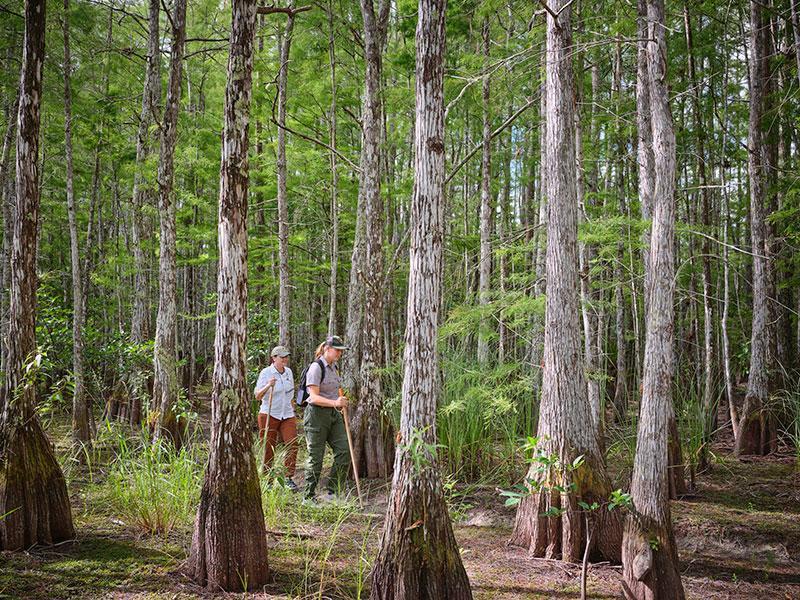The Ultimate Guide to Big Cypress National Preserve

Welcome to the ultimate guide to Big Cypress National Preserve, your go-to resource for exploring one of Florida's most diverse and captivating natural areas. In this article, we'll answer some of the most common questions about the preserve and provide insider tips to help you enjoy your visit to the fullest.
Keep reading to learn about the unique ecosystems, rich history, and exciting activities that make Big Cypress a top destination on Florida's Paradise Coast. From hiking and bird watching to the best time of year to plan your trip, this guide covers everything you need to know for an unforgettable visit.
What Is Big Cypress National Preserve?
Big Cypress National Preserve, spanning approximately 729,000 acres, is a vast protected area in southwest Florida-just 60 miles from Miami and 50 miles from Naples. Established on October 11, 1974, it became America's first national preserve, alongside Big Thicket National Preserve in Texas.
Big Cypress protects a unique freshwater swamp ecosystem, home to a wide variety of plants and animals. Its five habitats-hardwood hammocks, pinelands, prairies, cypress swamps, and mangrove estuaries-support rich biodiversity and critical wildlife areas year-round, especially for species adapted to both wet and dry conditions throughout the year.

Historically, the area that now makes up the reserve has been home to indigenous peoples for thousands of years. The Calusa were among the first to inhabit the region, followed by the Seminole and Miccosukee tribes. These indigenous communities have a long history of adapting to and coexisting with the swamp, which remains a cultural and historical focal point within the preserve.
Today, Big Cypress National Preserve attracts nearly one million visitors annually, offering numerous recreational opportunities such as hiking, bird watching, and kayaking. It also continues its important role in protecting critical habitats for endangered and threatened species, like the Florida sandhill crane, the Florida panther, the red-cockaded woodpecker, the eastern indigo snake, and the ghost orchid.
How Is A Preserve Different From A National Park?
A national preserve, like Big Cypress National Preserve, mainly differs from a national park in its management and allowed activities. While both aim to protect natural environments and provide recreational opportunities, national preserves are more flexible in permitting traditional and recreational uses that are typically restricted in national parks.

Big Cypress became America's first national preserve through a strategic compromise to prevent its development into a Jetport while also keeping it separate from Everglades National Park. This decision allows the land to be used for activities like oil and gas extraction, private land ownership, hunting, off-road vehicle use, and traditional practices by the Miccosukee and Seminole tribes, as specified by Congress.
What Activities Can Do You In Big Cypress?
Big Cypress National Preserve offers a wide range of activities, including camping, kayaking, and even night sky programs. Hiking is popular, ranging from the easy Kirby Storter Boardwalk, a dry walk ending at a wildlife-rich gator hole, to more adventurous trails like the Gator Hook Trail, where hikers can wade through swamp waters.
One of our favorite activities at the preserve has to be the ranger-led swamp walks. These guided hikes, available during the winter, take visitors through swampy areas, providing a close look at the ecosystem and its inhabitants.
Kayaking on the Turner River Paddling Trail is another must-do. This trail allows you to paddle through freshwater swamps and coastal estuaries. It's another fantastic way to see wildlife, like alligators, river otters, manatees, and dolphins. You can even take a guided paddling tour with Everglades Area Tours!
For a more relaxed adventure, take a scenic drive on the 27-mile Loop Road or the 17-mile Turner River Road. These routes offer breathtaking views and excellent opportunities for wildlife watching, especially birds and alligators. Whether you're hiking, paddling, or driving, Big Cypress National Preserve promises an unforgettable experience amidst Florida's wild beauty.

What Wildlife Can You See At The Preserve?
One of the most notable inhabitants of Big Cypress National Preserve is the endangered Florida panther, a subspecies of the mountain lion. In fact, only about 200 of these individuals are estimated to remain in the wild. The preserve also supports the threatened Florida black bear, the sole bear species found in the state.
Birdwatchers can spot the rare red-cockaded woodpecker and snail kite, as well as more commonly seen birds, like the anhinga, red-shouldered hawk, purple martin, northern mockingbird, and palm warbler. As far as mammals go, another visitor favorite is the big cypress fox squirrel, known for its agility and long, bushy tail.

The preserve's wetlands and waterways also host marsh rabbits, river otters, and, of course, the iconic American alligator. If you get extra lucky, you might even glimpse a Florida manatee in the preserve's aquatic habitats!

When Is The Best Time To Visit Big Cypress?
The most popular time to visit Big Cypress National Preserve is during the dry season, which runs from November to April. This period offers ideal weather with cooler temperatures and minimal rainfall, perfect for hiking, wildlife viewing, and other outdoor adventures. You also won't have to worry about as many mosquitoes as during the wet season!
Your chances of spotting wildlife skyrocket during this time of year since animals flock to water sources. Additionally, for birders, it signifies the best season to witness both migrating and wintering birds in Florida, like palm warblers.
Although January through March are the peak months for tourism in Big Cypress, we actually love visiting in November or December. During these shoulder months, you get the best of both worlds: the same fantastic weather conditions with the added benefit of fewer crowds.
Plan your visit to Big Cypress National Preserve today and experience the unmatched beauty and adventure that awaits. After all, when it comes to exploring Florida's wild side, Only Paradise will do.